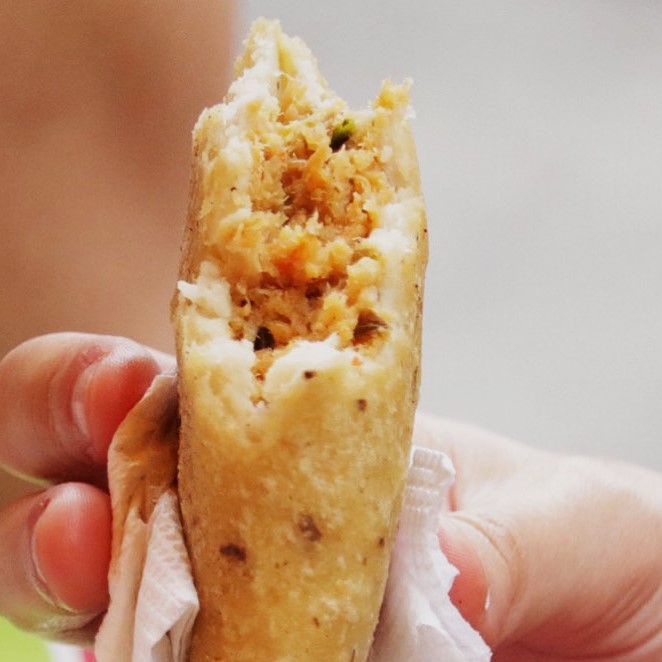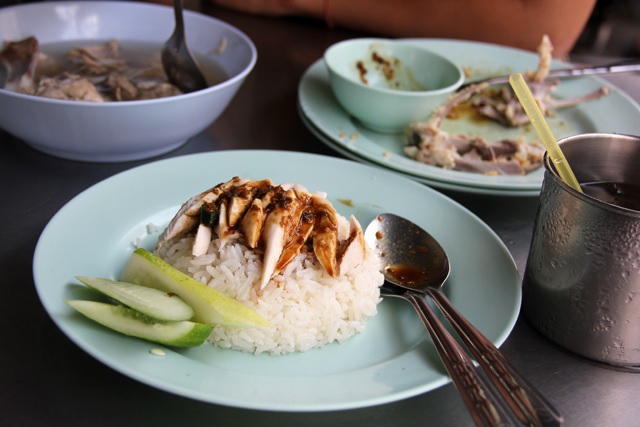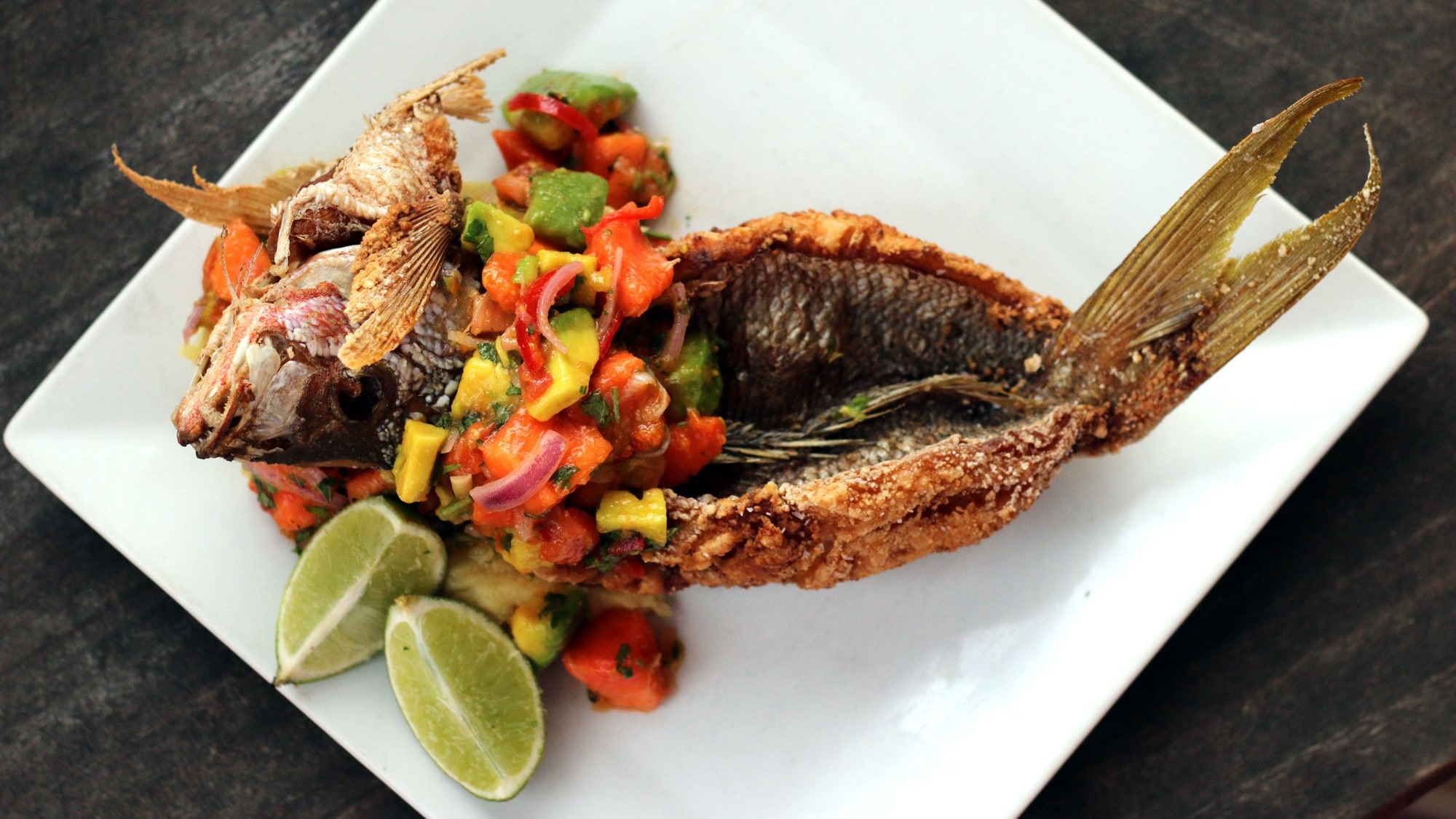7 Essential Arepas in Caracas
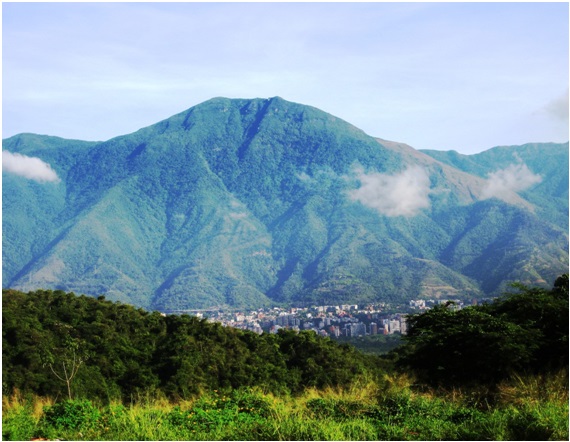
The arepa is a traditional national food in Venezuela with diverse local recipes./MilSabores.net
When a Venezuelan says he is going to “win his arepa,” he means he is going to work so he can eat well. Literally every day’s bread and butter, experts say the word arepa originated from the word erepa, which South American natives called bread when the Spaniards arrived. They broke corn kernels between two stones, retaining their nutrients, then cooked them on a clay griddle called an aripo.
The preparation of arepas took an evolutionary step forward in 1960, when Harina P.A.N. began marketing parboiled cornmeal flour. Mixed with water and salt, it is hand-shaped into round, skinny or fat patties, then baked or fried.
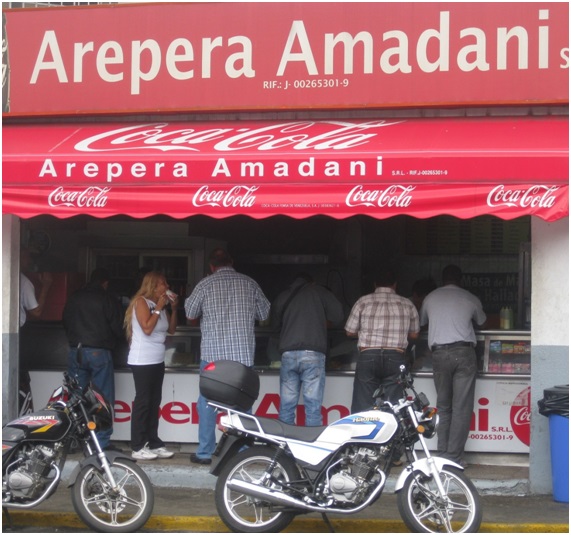
Arepera Amadani/MilSabores.net
Today, arepa shops are found in major cities around the planet. The organization “Venezuelans in the World” created Arepa World Day to meet, talk and honor what they call the gourmet flag of Venezuela. Increasingly, reviews are published by gourmets in prestigious journals around the world. Venezuelans eat arepas any time: at breakfast and dinner as the main dish, at lunch as a side dish to soups and at dawn as comfort food after a good party.
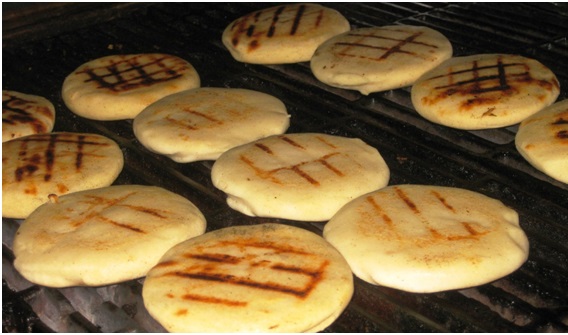
Viudas at El Budare/ MilSabores.net
Arepas are prepared at home and in specialized restaurants called areperas. Preparations vary in regions across Venezuela. Typically, in the states of Lara and Falcon, arepas are peeled. In the Andean region, they are very thin, in contrast to very thick ones made in the central region. In the east, they are prepared very big and almost always fried or roasted. In Caracas, we enjoy the luxury of finding them in all shapes.
Areperas call them funny names according to the fillings. Widows are plain, unopened arepas. Blondies are stuffed with chicken and yellow cheese. Hairy arepas are filled with shredded meat and cheese. Dominos are stuffed with black beans and white cheese. And the mattress breaker is filled with a variety of seafood. Here are some of the essential arepas in Caracas.
1. Arepa pelada with dogfish shark - Arepa Pelá
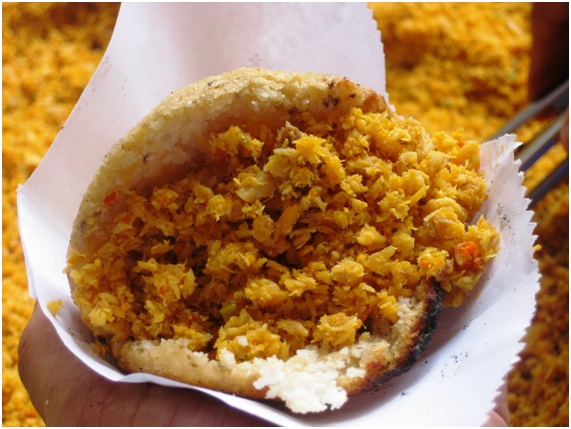
Arepa pelada con cazon/MilSabores.net
This small stand at the Los Palos Grandes street market is set up every Saturday in Caracas’ Chacao municipality. The arepas are made by boiling corn with lime or ash, then removing the crust. The grains are subjected to long cooking and ground with a stone to make the dough. The Dogfish Shark arepa pelada, extraordinarily tasty for its texture and unique flavor, is prepared with a chili sauce infused with sweet onion and pepper, then mixed with fish seasoned with salt and annatto.
2. Arepa de Chicharron - Amadani
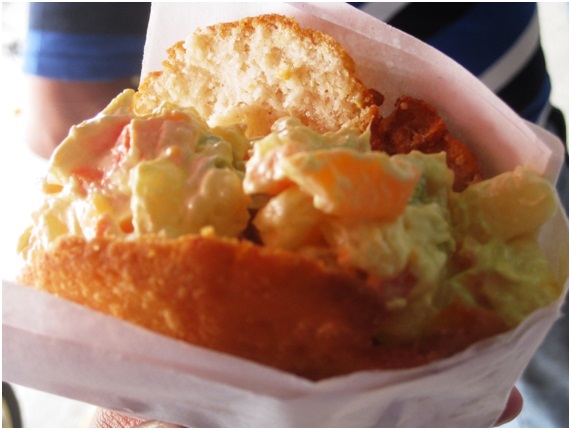
Reina Pepiada con chicharron at Amadani/MilSabores.net
Opened by Spaniards more than 52 years ago on the Second Avenue of Montecristo, the dough is prepared with crispy pork rinds, fried pork and salt. The combination of corn dough and roast pork skin is wonderful, enriched with any filling. Very special are those made with a mixture of chicken, potatoes, carrots, petit pois and mayonnaise, then topped with sliced avocado. Other favorites are those stuffed with roast beef, sausage or pork, then combined with a variety of fresh white cheeses.
3. Arepas de Colores - Chacao Bistró
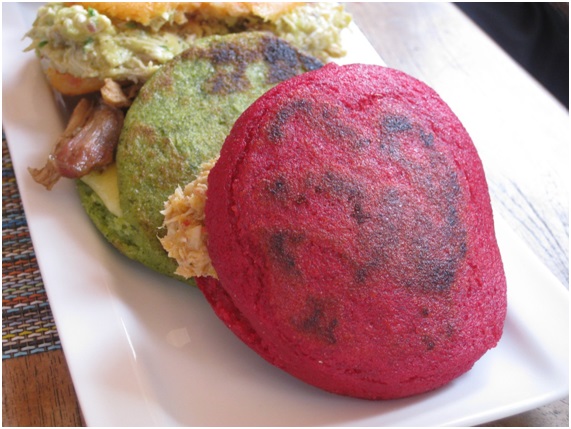
Arepas de Colores at Chacao Bistro/MilSabores.net
Tinted arepas are trendy and are part of a succulent brunch as this colorful bistro. Made with precooked corn flour, the green one is mixed with parsley. The red one features sweet chili. The black one is made with beans and the purple is mixed with beets. The fillers are varied with Creole flavors. I recommend the Reina Pediadas and the one with pork.
4. Arepa Capresa - Arepa Factory
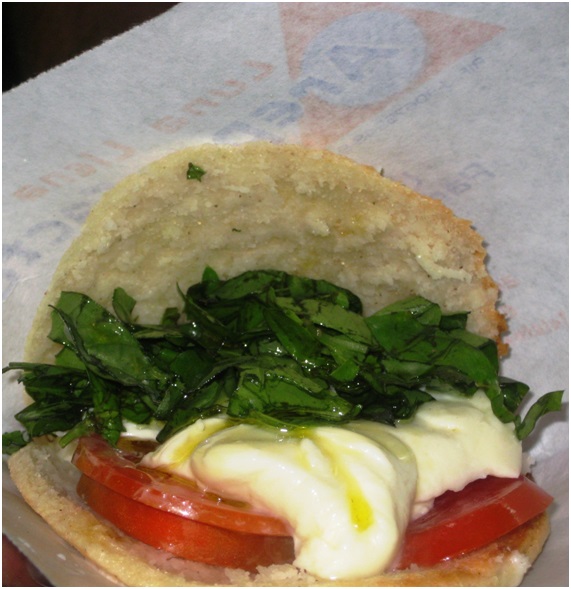
Arepa Capresa at Arepa Factory/MilSabores.net
This daring factory hand-crafts arepas in a unique style. On a daily basis, they offer non-Creole flavors such as arepas with salmon, tuna, roast turkey, fried sardines or emmental cheese. Among my favorites here, gloriously flavored, is the Capresa that comes not with the typical traditional Italian buffalo mozzarella, but with Guyanese cheese, several tomato slices, basil and plenty of olive oil. The vegetarian arepa has a surprising and very tasty vegetable filling, cooked very slowly on a simmer plate. Cooked eggplants mixed with handmade cheese is an out-of-this-world dish. Sensational!
5. Arepa Pelua - Los Pilones del Este
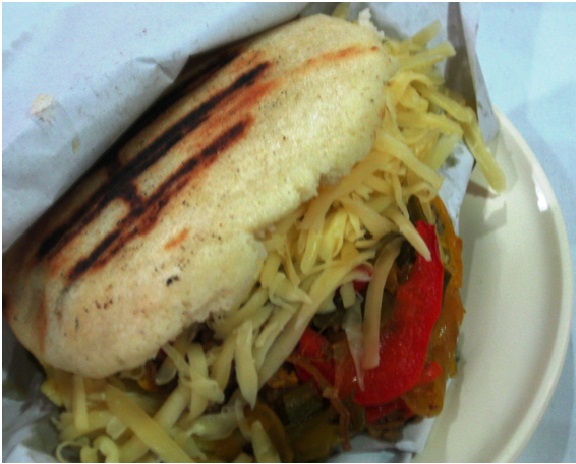
Arepa Capresa at Arepa Factory/MilSabores.net
Here the “Hairy arepa” is big, with lots of grated cheddar cheese and shredded meat cooked with sofrito: juicy tomatoes, garlic, onions and leeks. Along with the popular arepas, fans also order cachapas with different types of white fresh cheese and hervidos, creole soups made with chicken or meat and vegetables.
6. Arepa Carne Esmechada - El Solar del Este
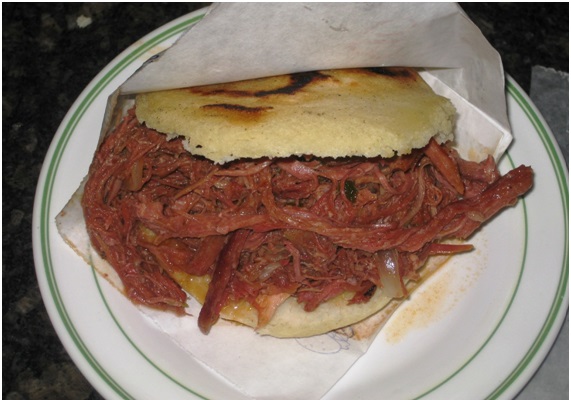
Arepa Carne Esmechada at El Solar del Este/MilSabores.net
Open 24 hours a day, this is the typical arepara to visit at dawn. The waiters come and go attending to diners eating arepas no matter what time you go. The slow-cooked, juicy, shredded meat is one of the simplest and, at the same time, most requested fillings. Other fillings include grilled chicken, Spanish sausage and “asado negro,” thinly sliced meat in a black sauce sweetened with brown sugar.
7. Arepa con Caraotas Negras - Doña Caraotica
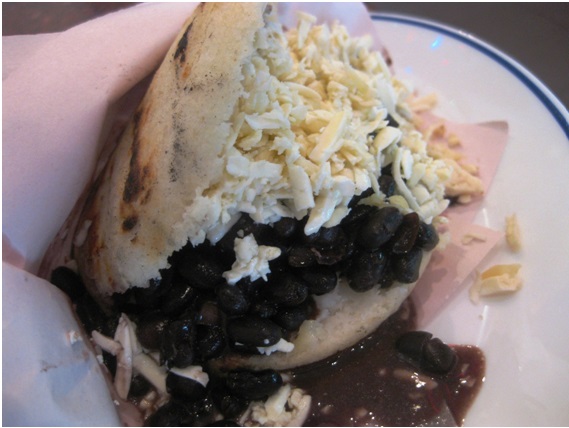
Arepa con caraotas negras at Dona Caraotica/MilSabores.net
Black beans – along with white, red and other colors – play a large part in the staple diet of Venezuelans. The legumes are soaked in water for about 12 hours, then cooked for about two hours or until tender in fresh water with salt, sweet red chilies, garlic, onion, red or green peppers. Some people prefer them sweetened with sugar or sugar cane. With arepas, they are typically mixed with white cheese.
Category:
Recommended features by ExtremeFoodies



